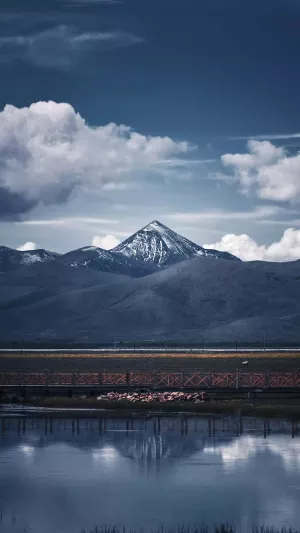There are various landforms on the earth. Mountains, hills, plains, plateaus, and basins constitute various terrain, making our earth more diverse and richer.
The plan is suitable for the development of prosperous cities, and the plateau and mountain areas are good places for tourism. The hilly area is suitable for planting some economic crops. So, do you know how mountains are formed?
Now let's take a look together.
Mountains are usually 500 meters above sea level, with a relative height difference of at least 200 meters from the ground to the top. "Hill groups" that do not meet this standard can only be called hills.
In fact, humans began to explore the causes of mountains a long time ago. After various analyses and calculations, geologists have obtained the answer: They believe that the main driving force for the formation of the mountains is the horizontal squeeze of the crust. They believe that there are two main types of the squeeze, which are horizontal squeezing and squeezing towards the equatorial direction.
Horizontal squeezing is caused by changes in the speed of the earth's rotation. The squeezing towards the equatorial direction is caused by different line speeds of the earth's rotation at different latitudes.
These two squeezing methods provide the direct impetus for the formation of the mountains. Coupled with the distortion caused by uneven crustal force, a variety of mountains are formed.
After the formation of these mountains, they will also be eroded or weathered by the forces such as flowing water, wind, and biology. They are like the carving knife of nature, shaping various strange rocks and strange stones. These are all the magical works of nature.
Let's enjoy some of the most magnificent mountains in the world.
Cook Mountain
Mount Cook is not only famous for its high mountains but also known for its special geological history. About 150 million to 20 million years ago, this was the bottom of the sea. It began to rise 10 million years ago and became a mountain. In addition to Cook Peak and its surroundings, the Alps monument is also an excellent place to watch this mountain.
Mount Kilimanjaro
Mount Kilimanjaro is located in the northeast of Tanzania and about 160 kilometers south of the Great Rift Valley of East Africa. It is the highest mountain in Africa and known as the "roof of Africa". As Kilimanjaro is both a volcano and a snow mountain, it has become a popular destination for mountaineers from all over the world.
With 14 international routes to all parts of the world, travelers from five continents can fly directly to the foothills of Mount Kilimanjaro.
Fitzroy Hill
Fitzroy is a famous peak in southern Argentina. Although Mount Fitzroy is only 3,405 meters high, which is not too high compared to the other peaks, it is technically the most difficult mountain to climb.
There's probably only one successful climber here a year. With Fitzroy virtually cut off from the world, climbers face many physical and mental challenges.
The Andes Mountains
The average width of the Andes from east to west is 241 kilometers. The average elevation of the mountains is 3,660 meters, with many peaks covered with snow all year round, and the elevation is more than 6,000 meters.
At 7,500 kilometers long, the Andes are three times the length of the Himalayas and the longest mountain range on land.





